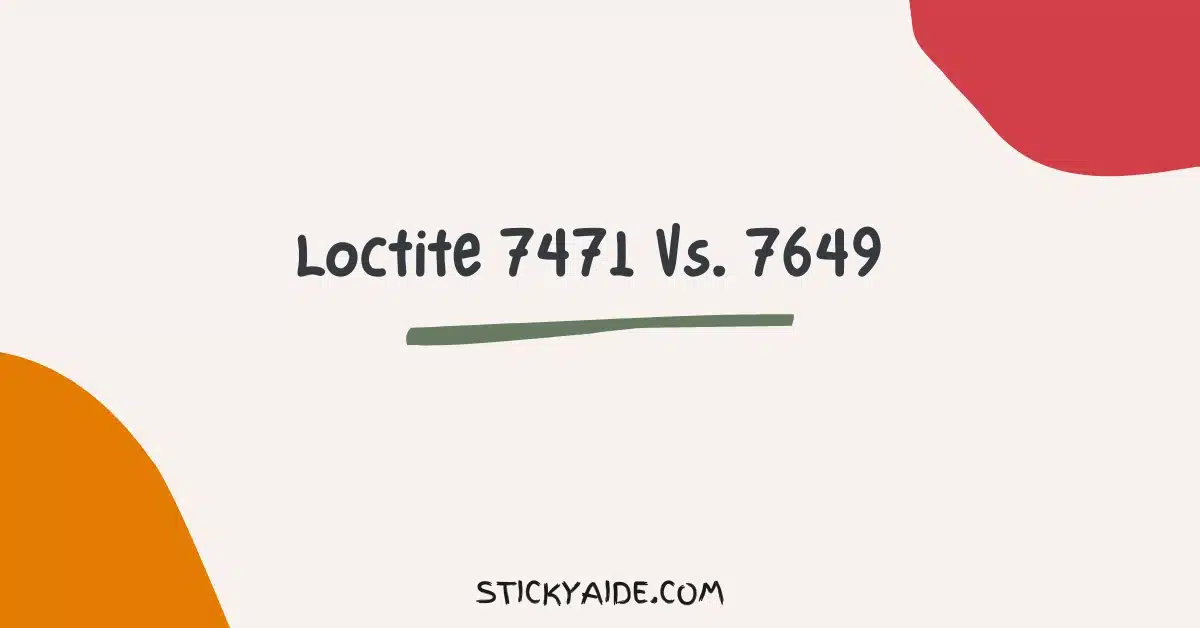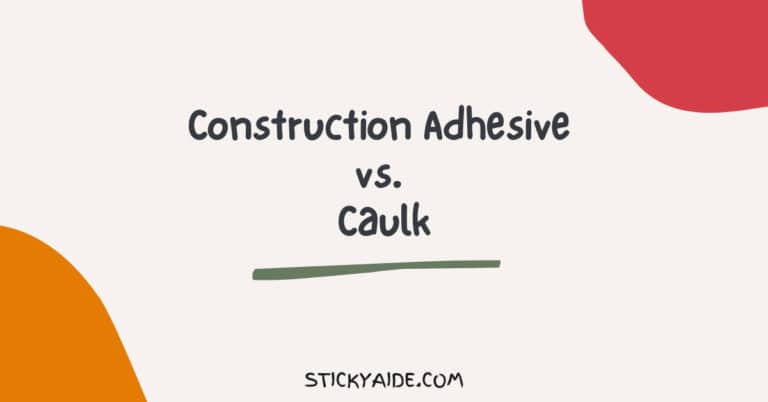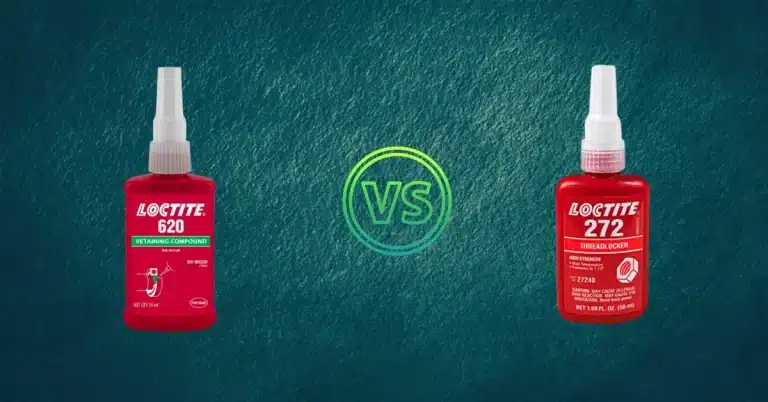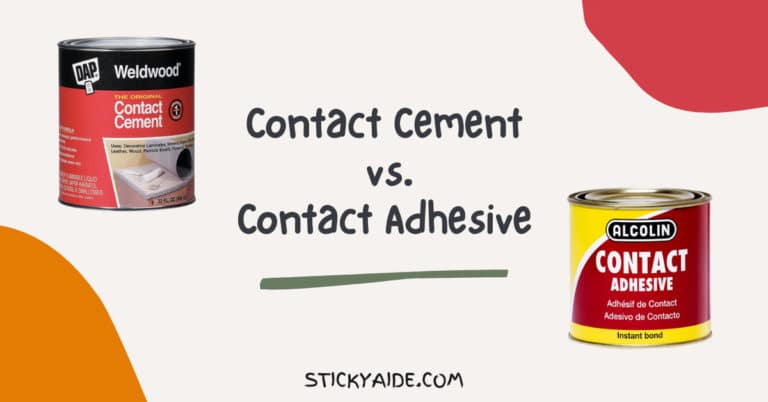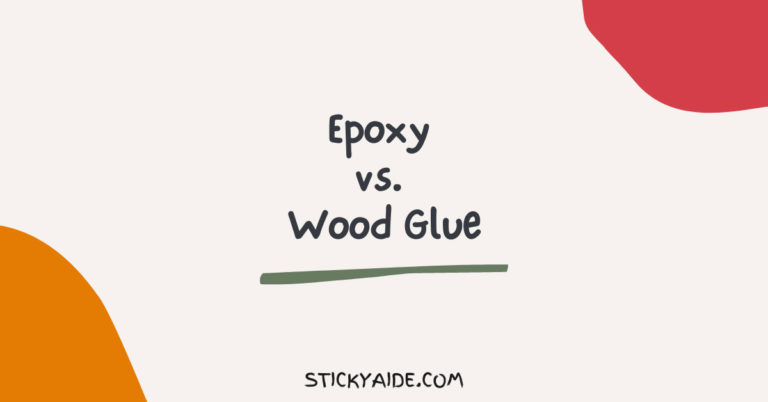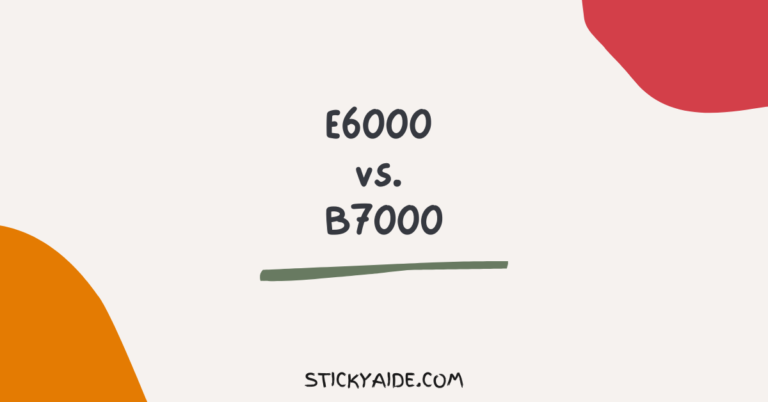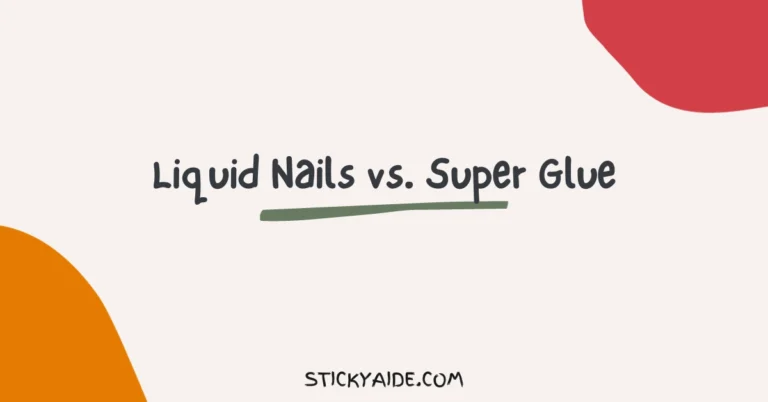You might have heard of Loctite 7471 and Loctite 7649, if you’re looking for a way to speed up anaerobic adhesive curing.
Both of these are activators that help initiate the polymerization of anaerobic adhesives, which are adhesives that cure in the absence of oxygen and in the presence of metal ions.
Loctite 7471 and Loctite 7649 are two popular primers commonly used in conjunction with Loctite anaerobic adhesives and sealants.
Throughout this article, I will compare Loctite 7471 Vs.7649 and help you decide which is best suited to your needs based on their properties, benefits, and drawbacks.
Read More: Loctite 242 vs. 243
Loctite 7471 Vs. 7649
What is Loctite 7471?
The Loctite 7471 liquid activator is a transparent, yellowish-amber liquid that is applied before anaerobic adhesive is applied to the bond area.
It is especially recommended for applications with low temperatures (<+15 °C) or when a faster cure is required.
Loctite 7471 can be used with most Loctite anaerobic products, such as thread lockers, thread sealants, retaining compounds, and gasketing materials.
Pros and Cons of Loctite 7471
Pros:
- Speeds up cure time
- Improves bond strength and gap filling
- Works on various metals and surfaces
Cons:
- Has limited shelf life
- May cause skin or eye irritation
- May not be compatible with some plastics or rubbers
Read More: Retaining Compound vs. Threadlocker
What is Loctite 7649?
Loctite 7649 is a solvent-based activator that is sprayed or brushed onto the bond area before applying the anaerobic adhesive.
It is designed to promote the curing speed of Loctite anaerobic products without any significant loss of joint strength. It is also recommended for applications with passive metals or inert surfaces and with large bond gaps.
Loctite 7649 can be used with most Loctite anaerobic products, such as thread lockers, thread sealants, retaining compounds, and gasketing materials.
Read More: Loctite 246 Vs. 243
Pros and Cons of Loctite 7649
Pros:
- Reduces cure time by up to 90%
- Enhances performance and reliability
- Offers good performance at low temperatures
Cons:
- Has a limited shelf life
- May cause skin or eye irritation
- May not be compatible with some plastics or rubbers
- May have a strong odor
Comparison Between Loctite 7471 and Loctite 7649
| Feature | Loctite 7471 | Loctite 7649 |
| Appearance | Transparent, yellow to amber liquid | Solvent-based, green liquid |
| Application method | Applied to bond area before adhesive | Sprayed or brushed onto bond area before adhesive |
| Cure speed improvement | Up to 50% | Up to 90% |
| Odor | Mild | Strong |
| Recommended for low temperature applications (<+15 °C) | Yes | No |
| Recommended for large bond gaps (>0.5 mm) | No | Yes |
| Skin or eye irritation risk | Yes | Yes |
Read More: Thread Sealant vs. Threadlocker
Which One Should You Choose? Loctite 7471 or Loctite 7649?
The choice between Loctite 7471 and Loctite 7649 depends on several factors, such as the type of anaerobic adhesive you are using, the application temperature, the bond gap size, and the surface condition of the parts.
The following guidelines will help you make your decision:
- If you are working at low temperatures (<+15°C), you may want to use Loctite 7471, as it is specially designed for low-temperature applications.
- If you are working with large bond gaps (>0.5 mm), you may want to use Loctite 7649, as it can reduce the cure time by up to 90%.
- If you are working with passive metals or inert surfaces, such as stainless steel, aluminum, zinc, or plated parts, you may want to use either Loctite 7471 or Loctite 7649, as they can both speed up the cure on these surfaces.
What Is The Shelf Life Of Loctite 7649?
The shelf life of Loctite 7649 is 700 days from the date of manufacture. For optimal storage, maintain the product at a temperature between 8°C (46°F) to 21°C (70°F).
How Long Does Loctite 7471 Take to Cure?
Loctite 7471 is an activator used where increased cure speed of LOCTITE anaerobic products is required. Within seven days of activation, the parts should be bonded together.
Last Opinion
Loctite 7471 and Loctite 7649 are both essential products that play distinct roles in optimizing the performance of Loctite anaerobic adhesives and sealants.
While Loctite 7471 focuses on promoting adhesion across a wide range of substrates, Loctite 7649 excels in accelerating the curing process, especially in challenging bonding situations.
By reading this article about Loctite 7471 Vs.7649, you may have understood the unique characteristics and applications of each primer. If so, then leave a comment below.

